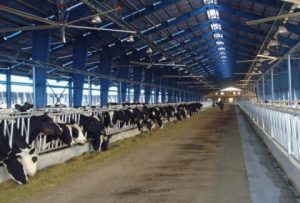are three different methods of animal husbandry that involve the breeding and raising of animals for food production. Livestock breeding refers to the process of raising animals such as cows, sheep, and pigs for meat, dairy, and other by-products. Poultry breeding involves the raising of domestic birds, such as chickens, ducks, and turkeys for their meat and eggs. Aquaculture on the other hand involves the breeding and farming of aquatic animals such as fish, mollusks, and crustaceans, for food production.
Currently Iran uses around 12600 boreholes to supply water for livestock breeding and poultry farming. The amount of water needed by animals varies based on several factors such as animal species, size, growth stage, activity level, feeding type, and dry matter intake. For instance sheep require 4 to 15 liters of water per day beef cattle require 22 to 66 liters per day cows require 38 to 110 liters per day and horses consume 40 to 45 liters per day. Similarly the daily water requirement for poultry ranges from 2 to 4 liters depending on factors such as the species and age of poultry temperature of the nest or salon and the number of intake seeds.
Water is required for filling the aquaculture pools and the growth of fish and the amount of this requirement depends on the size and number of fish evaporation and seepage from the pool beds. In Khuzestan province of Iran the rate of evaporation per hectare is 3-4 liters per second depending on the site’s geographical altitude. In contrast the evaporation rate in the northern province of Iran is 1.5-2 liters per second per hectare. By utilizing aquaculture in agriculture pools farmers can use fish-produced fertilizer to cultivate crops.

